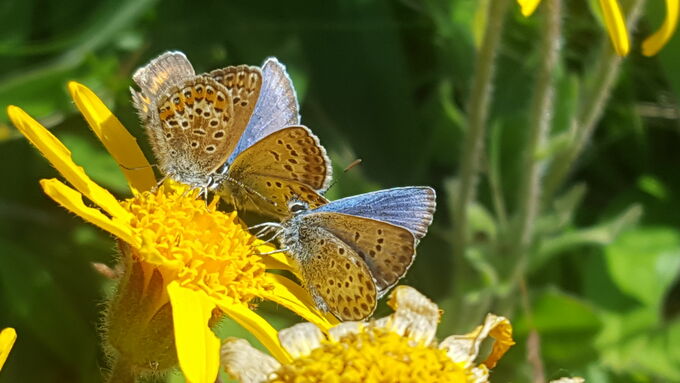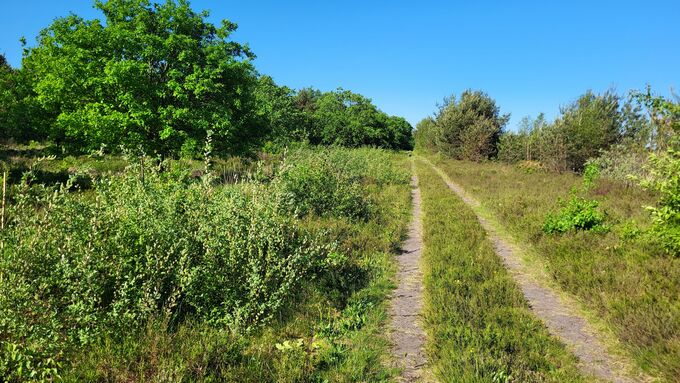The silver-studded blue (Plebejus argus) is the typical blue butterfly of heathland and nutrient-poor grassland. © Paul Müller, lower nature conservation authority of the district of Cuxhaven
download picturemain content
Project of the month
#08/2024 Kransburg Heath
Stabilization and optimization of growth conditions for arnica in a complex of Nardus grasslands and heath (District of Cuxhaven)
For the third project phase of the LIFE IP Atlantic Region DE, measures to restore an area of Nardus grassland (habitat type 6230) in the Kransburg Heath had been planned originally. However, things turned out differently: the planned area was abandoned, as there was no prospect of permanent and appropriate use of the Nardus grassland and the area only contained a few characteristic species. During an inspection, however, an alternative area was discovered: along a little-used path between an occurrence of older heath and a heath area which had been created as part of a compensatory measure, a Nardus grassland heath complex was identified in which a significant population of arnica (Arnica montana) occurs.
It was noticeable that the arnica plants grew almost exclusively along the path and did not spread much into the adjacent heathland. On closer inspection, decisive differences between these areas became clear: the few walkers and the infrequent driving by a hunter apparently ensured sufficient disturbance so that the arnica had enough open ground to germinate. With increasing distance from the path, however, grass invasion, scrub encroachment and moss growth increase, making it more difficult for arnica and other species of Nardus grasslands to spread.
The following measures were therefore defined together with the Lower Nature Conservation Authority of the District of Cuxhaven:
- sod plugging of purple moor grass dominated stands,
- removal of a pile of old wood interspersed with black cherry (Prunus serotina),
- precise extraction of willow bushes including roots,
- manual cutting of willows within arnica stands close to the ground,
- removal of some small shrubs and their roots.
The measures were carried out in coordination with the lower nature conservation authority in mid-May in warm weather to allow reptiles to escape and to be able to recognize the individual arnica plants in the area. The arnica stands (including individual plants) were marked with bamboo sticks. The excavation work was carried out within one day, with the NLWKN supervising the construction work. The NLWKN carried out the manual clearing work itself during the implementation.
A count shortly after completion of the action revealed the presence of about 4,530 arnica plants, of which around 14 percent were flowering.





